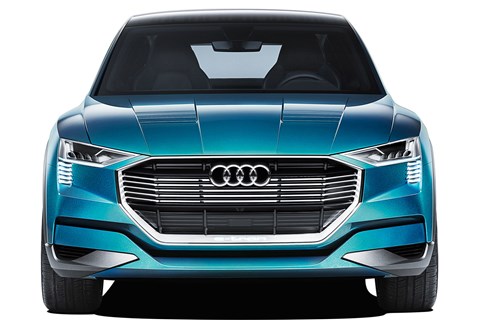► We scoop the new BMW i6
► It’s the next i car, slotting betwixt i3 and i8
► 300-mile range is the goal for BMW
BMW is closing in on an all-new ‘i’ model, an electric i6 crossover to be big brother to the i3 city car. Scheduled for mid-2020, the i6 was the star attraction at BMW’s long-term corporate planning meeting (nicknamed LUP), the week before Christmas.
Chaired by CEO Harald Krüger, his r&d and design chiefs Klaus Fröhlich and Adrian van Hooydonk, the planning team mulled early prototypes and full-size clay models, including the i6. The latest i concept is said to resemble the DS5, the handsome five-door crossover from Citroën’s wannabe premium brand. The BMW’s shape is classic monospace, all extended roofline and streamlined frontal area, in a bid to reduce drag to maximise range. The i6 is a little longer than a DS5, more in the 3-series saloon bracket.
Krüger wants BMW to be the leading premium brand in a digitised automotive world. So the Bavarian think tank is working 24/7 on high-tech kit, including the latest connectivity features, iDrive gen6, more efficient batteries (here, a cooperation with Mercedes is increasingly likely) and a third new architecture, this time for bespoke electric vehicles.
In addition to the new front-drive and rear-drive component sets, the FSAR architecture features a flat floor above a sandwich section to be filled with batteries. It’s conceived as a modular platform, allowing it to stretch or shrink, the latter to potentially include a new Mini ‘superhero’.
The r&d crew has been considering all kinds of power sources: pure battery electric vehicle (BEV), hybrid, fuel cell. But according to the Munich grapevine FSAR’s primary goal is to give birth to a class-leading electric car. Not a high-floor SUV like the Audi Q6 or Jaguar BEV, nor a low sporty coupe like the Porsche Mission E either, with its ‘topographic’ floor creating footwell recesses between battery packs. To reach 60,000 units a year – significantly more than the carbonfibre i3, for superior economies of scale – i6 will likely boast a more varied material mix, but still with decent carbon content.
BMW’s drivetrain targets are fluid, given the relentless progress expected between now and 2020 in the field of e-motors, batteries, charging systems and performance electronics. The bosses are said to favour a new lithium-polymer battery, which is reportedly capable of tripling the energy capacity to about 500kWh, while cutting costs in half. This technology, which is supported by key suppliers like Bosch, reduces the weight of the battery pack required for a real-world driving range of 300 miles from 600 to 200kg. Power would be transmitted to the road by either two or four electric motors: that’s still to be determined, as is peak output, charging time and the oh-so-critical range.
Features
Goes the extra miles
Use of lithium-polymer batteries could triple energy capacity to 500kWh, cut costs and reduce weight to such an extent that a 300-mile range looks achievable

It’s not an SUV
So it’s unlike Audi’s Q6 E-tron (left) or Jaguar’s E-Pace, and it’s no sports car either, so forget Porsche’s Mission E. BMW wants i6 to be a proper five-door family car, DS5-style
Touch of Mini?
If production car gets big round fogs, they’ll remind us of BMW’s iconic small-car brand. That may be apposite, as the i6 platform could be shrunk down to create a radical future Mini